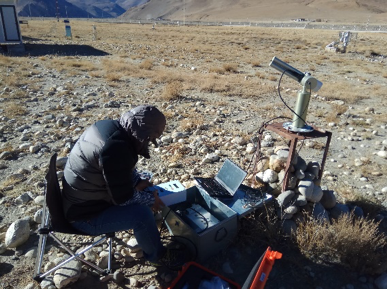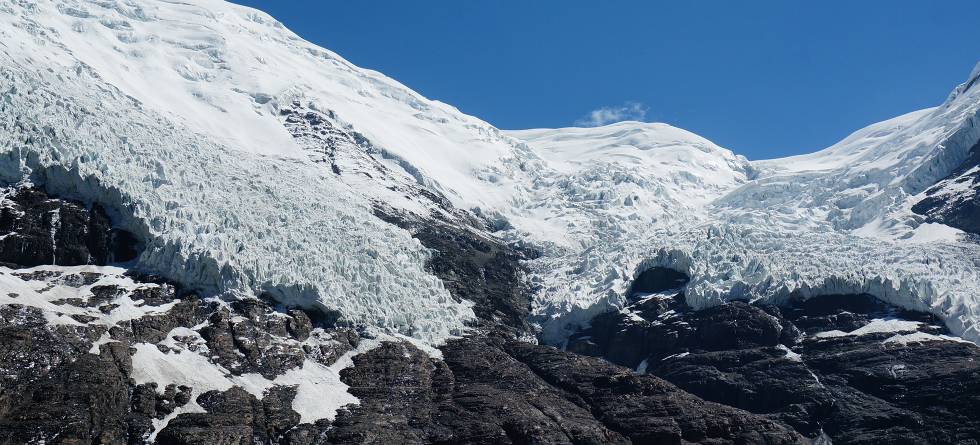Written by Fei Li from the Bjerknes Centre and the Geophysical Institute at the University of Bergen.
The Tibetan Plateau (TP) is known as the ‘Third Pole’ and contains the largest land ice masses outside the polar regions. The TP has recently been polluted by anthropogenic emissions transported from South Asia, but the mechanisms conducive to this aerosol delivery are poorly understood, mainly due to far fewer public available data in-situ.

An international collaboration among UiB, the Institute of Tibetan Plateau Research, Chinese Academy of Sciences (ITPCAS), Nanjing University of Information Science and Technology, China (NUIST) and NILU provides a new opportunity to narrow this knowledge gap.
Here we show that winter loss of Arctic sea ice over the subpolar North Atlantic boosts aerosol transport toward the TP in April, when the aerosol loading is at its climatological maximum and preceding the Indian summer monsoon onset.
The results are based on synthetic analysis on multidatasets such as ground-based remote sensing of aerosol optical depth (AOD) and meteorological measurements at Nam Co Monitoring and Research Station for Multisphere Interactions (Nam Co) and Qomolangma Atmospheric and Environmental Observation and Research Station (QOMS), global satellite observations of sea ice and atmospheric and land reanalyses.
In the paper we also highlight an Arctic-Ural-TP teleconnection which provides a connection of the two poles of the earth (i.e., the Arctic and the TP).
Reference
Li, F., Wan, X., Wang, H. et al. Arctic sea-ice loss intensifies aerosol transport to the Tibetan Plateau. Nat. Clim. Change (2020).

